Women 79
Iranian Man’s Marriage Annulled

Iranian Man’s Marriage with Nine-Year-old Girl Annulled After Photos Went Viral
Thee problem of marriages with girls in various Islamic countries is a constant struggle byactivists
By Juventud Rebelde digital@juventudrebelde.cu
Published: Wednesday 04 September 2019 | 09:46:25 am
A CubaNews translation.
Edited by Walter Lippmann.
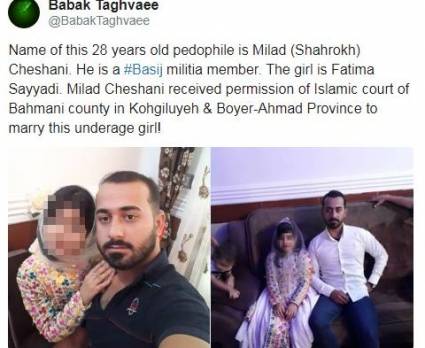
Iranian authorities took action on the matter when the fact was known Author: Twitter Published: 04/09/2019 | 09:43 am
Iranian authorities have demanded that an Islamic court in Bahmai County, Kohkiluyeh Province and Buyer Ahmad annul the marriage between a 28-year-old man and a 9-year-old girl, journalist Babak Taghvaee reported on his Twitter account.
This decision was taken under public pressure after the wedding images went viral on social networks, RT says.
The wedding video was made public by the journalist and women’s rights defender in Iran, Masih Alinejad.
This is a wedding party for a girl under 13 years old. I cried when I received this video … According to Islamic laws, a girl […] can get married but can’t choose her own dress, the activist said on her Twitter account when she posted the video.
Under Iranian law, a girl can get married after the age of 13, and a boy from the age of 15.
The pedophile #Basij militia member named Milad Cheshani has contacted the journalists who reported his marriage. He has claimed that it is just temporary marriage. He also has threatened the journalists who criticized him for act of pedophilia!!https://t.co/1xqOpEJVZr
— Babak Taghvaee (@BabakTaghvaee) September 3, 2019
According to 2015 data, every seven seconds a girl under 15 gets married somewhere in the world, according to the NGO Save the Children. Meanwhile, India is the country with the highest rate of underage wives, according to statistics from the same year, more than 24.5 million marry before they turn 18.
Peruvian women demand end to femicide

Peruvian women demand an end to gender-based violence
We have to promote a culture free of machismo, said Peruvian Minister of Women and Vulnerable Populations Gloria Montenegro, who was present at the popular demonstration organized by the collective Ni Una Menos.
By Juventud Rebelde
digital@juventudrebelde.cu
Sunday 18 August 2019 | 09:42:37 am.
A CubaNews translation.
Edited by Walter Lippmann.
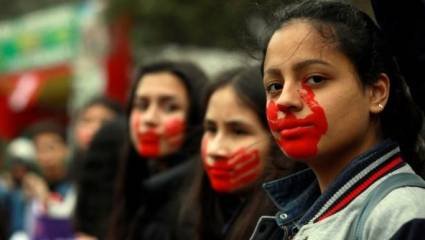 LIMA, August 18.- This Saturday thousands of people held a demonstration in the Peruvian capital called Ni una menos. Women’s organizations demanded protection in the face of the growing number of cases of femicide in the South American country.
LIMA, August 18.- This Saturday thousands of people held a demonstration in the Peruvian capital called Ni una menos. Women’s organizations demanded protection in the face of the growing number of cases of femicide in the South American country.
It was the fourth edition of the annual march to demand an end to femicide, which this year stands at 105, while cases of attempted femicide total about 150 more so far in 2019.
We have to promote a culture free of machismo, said Peruvian Minister of Women and Vulnerable Populations Gloria Montenegro, who was present at the demonstration organized by the collective Ni Una Menos, reports Telesur.
Alejandra Ballón, a spokeswoman for the group, said she was dismayed by the figure of 105 femicides, which means that in Peru a woman is murdered every day.
But there are about 250 femicide attempts and it must be said that for each attempt of femicide there are children, parents, grandparents, a whole family that is dismayed because it has a direct relative who is a victim, Barrón added.
She mentioned that in 2018 there were more than 12,000 cases of rape and that, of those cases, 60 percent of the aggressors are family members and of the adolescents who become pregnant, 90 percent are incest, she said.
Another participant in the demonstration, which toured the streets of downtown Lima, was attorney Arlette Contreras, who denounced the fact that women are also victims of the state through its operators who deny access to justice.
We are in the streets again to denounce gender violence by the aggressors, as well as to denounce the gender violence of the Peruvian State that affects, harms and hurts women victims and survivors, said the jurist.
Women the Third Age of Their Sexuality

Everything about health
Women and the Third Age of Their Sexuality
Countless myths have historically reinforced stigmas about sexuality after people reach the sixth decade of life and come to consider themselves as adults and older adults.
Author: Lisandra Fariñas Acosta | internet@granma.cu
July 7, 2019 20:07:50
A CubaNews translation.
Edited by Walter Lippmann.
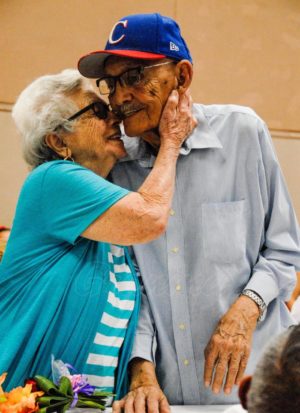
It is essential that the family accept the sexuality of the elderly. Photo: Dunia Álvarez Palacios
Countless myths have historically reinforced stigmas about sexuality after people reach the sixth decade of life and come to see themselves as adults and older adults.
These myths, in the case of women, “conceived under the stereotype of mother, woman as a function of the family”, have hindered their enjoyment of sexuality, and which increases in the so-called third age.
This is what Dr. Beatriz Torres Rodríguez, president of the Cuban Society for the Multidisciplinary Study of Sexuality (Socumes), said at the recently held XVII Congress of the Cuban Society of Gynaecology and Obstetrics, addressing this issue.
“Women are prepared to attend to and satisfy the needs of others. Socially, there is a predominant belief that her sexual capacity and desire are less than those of men, and that female love is romantic and must have an erotic passivity,” the specialist said.
This is accompanied by other myths such as that only in youth you enjoy a good sexuality and that women in old age do not have an active sexual life, and are not interested in engaging in some romantic relationship, said the expert.
When talking about women’s sexuality in old age, many times we only think about the following aspects: fragility and loss of pubic hair; the vaginal mucosa dries up and atrophy, thus diminishing its secretion and facilitating infections; the vulva, labia minora and clitoris decrease in size, there is a shortening and narrowing of the vagina; the ovaries decrease in size, and the cervical mucus is thick, scarce and cellular; the breasts become flaccid as a result of the atrophy of the tissues and the lack of hormonal secretion.
For the psychologist, it is essential to take into account what older women think and what is meant by geriatric sexual health.
The latter is “the psychological expression of emotions and commitments that requires the greatest amount and quality of communication between partners, throughout existence, in a relationship of trust, love, ability to share and pleasure, with or without intercourse,” according to specialized literature.
This concept is fundamentally based on an “optimization of the quality of the relationship” (more than in quantity), said Dr. Torres Rodriguez.
For the interviewee, several elements cannot be lost sight of: self-perception of sexual attractiveness is a very important social factor.
“The climacteric anticipates the “feeling of old age” in many women. A large number of women mistakenly believe that once their reproductive function is over, sexual function is also lost,” she said.
Added to this is the fact that older people find it very difficult to consult medical science professionals, because there is a general lack of training in areas of sexuality and, even more so, in the sexuality of older people. Hence, the role of health professionals in general and family physicians, as well as specialists in Geriatrics, as key health providers at this stage must become essential.
It is essential that the person is cared for from a holistic point of view and that, for example, sexual dysfunctions are taken as seriously as high blood pressure or diabetes.
Studies carried out in our context have shown that, contrary to what many people think, a considerable part of dysfunctions in old age have their origin in ignorance, false expectations, feelings of being handicapped and other phenomena. These, although they play an important role in the appearance of dysfunctions, are relatively easy to combat and prevent by means of adequate information and discussion.
According to epidemiological studies, the fact of losing one’s partner is one of the most important determinants of the cessation of sexual activity.
“Traditionally, there has been a strong social tendency to consider negatively the establishment of new affective relationships, and even new marriages in widows, which further limits their sexual activity,” said the psychologist.
In general, it is essential that the family accept the sexuality of the elderly, consider the possibilities of second and third marriages, and respect the privacy of the parents and grandparents.
Older women’s sexuality as an indicator of quality of life, especially perceived quality of life, requires a better understanding of all factors affecting it. One of the most important is mourning, for the body, for sexual and social losses.
But what does old age really imply or limit? On the subject, the experts William Masters and Virginia
Johnson, who are dedicated to the study of human sexual response, argue that the elderly can have sex at any age.
An international survey of 1126 elderly people, conducted by the University of Michigan, showed that 30% were sexually active and showed that sexual dysfunction is not inherent in aging.
Hence the need to influence the understanding of the sexual changes that occur in old age and the negative influence that myths and beliefs have on the enjoyment of sexuality in women over the age of 60. “Sexuality is not only for young people,” explains Dr. Beatriz Torres Rodríguez.
Promoting knowledge about the rights of the elderly to enjoy their sexuality and promoting public policies that do not only correspond to the health sector is essential. The idea is to encourage spaces for socialization, recreation and growth in these stages of life, without neglecting family education in these areas.
IN CONTEXT:
- Cuba, with 20.4% of its population aged 60 and over, according to data from the National Statistics and Information Office (ONEI), is experiencing an accelerated process of demographic aging.
- Data from the last Population and Housing Census show a high incidence of single-person households, where there is a significant presence of older adults.
- In 40% of Cuban households, there is an elderly person. In 32% of them reside up to two or three persons 60 years old and over, so it is very likely that an older adult is caring for the other (especially women).
- The high prevalence of fragility, disability and dependence of older adults leads to a growing demand for care and social protection.
- In addition, current and future trends indicate that levels of demographic aging and declining population will continue to be reinforced.
- Considering the three fundamental demographic variables and their influence on aging, the decisive effect of (low) fertility, the much smaller effect of mortality and the non-negligible and probably substantial influence of external and internal migrations for the country and for some regions is confirmed.
- As a perspective of the demographic dynamics between 2011 and 2025, Cuba’s population will have decreased in absolute terms, almost 26% of its population will be 60 years old and over, with a high absolute growth of 80 years and over. By 2030, there will be 3.3 million people aged 60 and over, with direct impacts on the family and labor resources.
- “One of the most depressing circumstances for older adults is loneliness. This situation becomes more evident with the loss of marital ties (in the case of women they face greater widowhood than their male peers),” said Dr. Torres Rodriguez.
#MeToo at the Basel Fair
 Women Artists Bring #MeToo to the Basel Fair
Women Artists Bring #MeToo to the Basel Fair
By AFP
Sunday, June 16 2019 08:29
Translated and edited by Walter Lippmann for CubaNews.
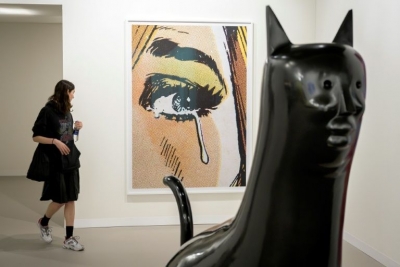
A work of art by Anne Collier titled “Woman Crying (Comic) #7”, with another by Nicolas Party titled “Big Cat” (right) on display at the Basel Art Fair, the largest in the world.
The #MeToo movement that exploded worldwide in late 2017 inspires several works on display this year at the Basel Art Fair, the largest in the world.
Visitors discover inflatable mannequins in white airbag dresses created to protect women from harassment in the workplace, and details of alleged sexual crimes of some 170 public figures displayed on four long walls dotted with red.
Women artists are at the center of the scene of this 50th edition, with their works and in-your-face installations expressing the anger and exasperation of persistent gender inequalities and the abuses and harassment condemned by society.
The Spaniard Alicia Framis has filled a room with delicate white mannequins with dresses made of airbag material, which are activated to protect different parts of the female body.
The work entitled “Life Dress” consists of dresses to “protect women in all work situations where there is some kind of abuse,” Framis told AFP.
The 52-year-old artist said she spoke with victims of harassment and abuse and her stories inspired the design, using “fashion to protest against violence.
While Framis turns to humor, Los Angeles-based artist Andrea Bowers opts directly for anger with her large archive project “Open Secrets.
It consists of photographic prints with red backgrounds, each mentioning the name and trade of the public figure accused of sexual harassment or abuse, her public response to the accusations, and details of the case.
Culture of Rape
Hollywood ex-producer Harvey Weinstein, whose alleged crimes launched the #MeToo movement, has two full panels dedicated to his long list of alleged crimes.
U.S. President Donald Trump also appears in the work, as do his predecessors Bill Clinton and George Bush senior, two Supreme Court justices, actors, journalists and musicians, among others.
“I think the #MeToo movement is perhaps one of the most important feminist movements of my life,” Bowers told AFP, referring to his inspiration for the play.
Bowers, 54, who presents herself as a feminist activist artist, said she was shocked to realize “what it was like growing up for me in that culture of rape where young men were allowed to sexually rape me and my friends.
With the #MeToo movement, this kind of behavior is finally “being recognized,” she said. “I hope it’s a historic change.
During the premiere earlier in the week, many men stopped in front of the work that covers two wide walls, on both sides, in the middle of the fair’s large exhibition space.
“You can see a lot of men standing here and a little insecure about how to react,” said Vanja Oberhoff, a young German art investor. “It’s a very powerful work,” he told AFP.
But not all reactions are positive.
Helen Donahue, who in 2017 tweet photographs of her body with marks for alleged abuse by independent columnist Michael Hafford, expressed indignation that Bowers used one of her images.
“It’s great that my damn photos and trauma are headed to the Basel fair. Thank you for exploiting us for the +arte+ ANDREA BOWERS,” he tweet Thursday.
Bowers, who insists on the importance of trusting survivors, quickly issued an apology for not asking Donahue’s permission before using the photo and removed the panel from his exhibit.
Women in the Ring

Boxing: Women in the Ring
Although boxing is inherent to our sporting tradition, several voices linked to Cuban pugilism advocate the inclusion of our women in this sport, a decision that falls to the authorities of this discipline on the island.
By Luis Autié Cantón digital@juventudrebelde.cu
A CubaNews translation.
Edited by Walter Lippmann.
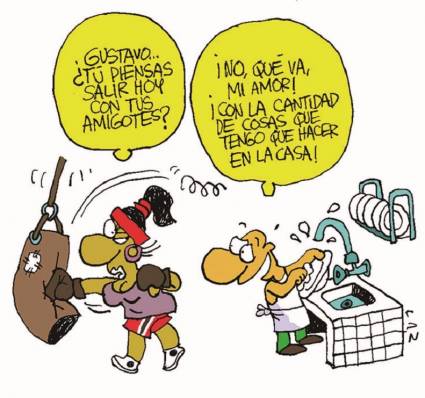
SHE: Gustavo… You’re thinking of going out today with your cronies? HE: I can’t go, my love, with all the things I’ve go to do at home!
Cuba is lagging behind. And no, I’m not talking about transportation or technology. I’m talking about boxing. Our men’s squad are championss because of their respect for each other. To name the four letters in a pugilistic event is to sow, among rivals, fear of the coming storm. It is to know that they will have to die on the canvas to defeat ours. We’ve earned that right over the years. But, I insist, we are lagging behind. When the next edition of the World Series begins, if it sees the light after the corruption scandals at the highest levels of the International Amateur Boxing Association (AIBA), it will be competing in eight male divisions and, listen well, in four female divisions. While this is not yet confirmed, when the river sounds…
And our female boxing, dear reader, doesn’t even bring stones.
Tamers
Nelsy Torres is 21 years old and gets up early every day to train. Her greatest aspiration is to be able to compete officially.
“As a boxer, I need boxing to be legalized because I want to fulfill a dream. If they don’t give me the opportunity, they are slowing down women’s rights. While other countries advance with results, Cuba is lagging behind. I’m sure we can have the same results as men. Even better. We can’t wait for generations of boxers to go by, and we can’t get anywhere,” she says impotently.
Rolando Acebal, helmsman of our main boxing squad, confesses that he has not seen any girl fight here in Cuba, but he does not hide his opinion that we could have good exponents in the future. “Currently, in the world, the countries that practice male boxing also practice female boxing, and no harm has been seen to the health of the athletes. If it had been any other way, it would have been detected and it would all be over.
“There are Cuban coaches abroad who work with women’s boxing. I think we should not deny that right to women who have the desire and have requested the opportunity to train and compete. There are even mothers advocating for their daughters’ opportunity. We’ve been told that they’re analyzing, doing medical studies, but we’ve been doing it for a few years now and we’re lagging behind in that sense.
The Story: A Ring on the Stand
The girls with their jabs, their uppercuts and their hooks are not rain that just fell. Since the 18th century, there have been sports fights between women in this discipline. The Londoner Elizabeth Wilkinson, in 1722, is the oldest known champion. A little more than a century later, it was fought for the first time on this side of the Atlantic, when the bell rang for the North Americans Nell Saunders and Rose Harland to face each other, ring by ring, in 1876, on American soil.
In 1954, almost 80 years later, a women’s poster could be seen on television. One of the fighters who appeared in the “magic box” was Barbara Buttrick, one of the most famous boxers of all time.
The United States was the country where women’s boxing developed the most, following that fight of the nineteenth century. Between 1975 and 1978 some women applied for boxing licenses. Particularly important was the successful trial that the boxers Cathy “Cat” Davis, Jackie Tonawanda and Marian “Lady Tyger” Trimiar carried out against the state of New York, due to the rejection of their requests for licenses. The wide media coverage of these events directed public attention to this discipline.
However, the persistence of restrictions and prejudices led Lady Tyger to go on a one-month hunger strike for women’s rights in boxing in 1987.
As can be seen, some of the most important fights in the history of women’s pugilism have not been fought on canvas, but in the courts. Five years after that hunger strike, in 1992, Massachusetts boxer Gail Grandchamp knocked the system out by getting the state Supreme Court to recognize her right to box after eight years of trial. At the time, the Court held that it was illegal for an official to deny a license to box on the sole ground of the applicant’s sex. However, Grandchamp was unable to practice boxing because he had already exceeded the maximum age of 36 for amateur boxers.
In 1993, the USA Boxing Association, which is responsible for amateur boxing in the United States, agreed to regulate women’s boxing throughout the country after 16-year-old Dallas Malloy won a federal discrimination lawsuit in court.
Despite all the official and unofficial history, of all that baggage that goes back to the eighteenth century, it was not until March 15, 1996, that occurs the fact that is considered by many as the birth of modern female professional boxing. We refer, in this case, to the fight between Christy Martin and Deirdre Gogarty. That same year, the UK Amateur Boxing Association repealed the 1880 ban on boxing for women, and a year later, in July 1997, the first U.S. women’s boxing championship was held. In the following years, other countries were authorizing and organizing this discipline, in the women’s section, and were consecrated world champions in all categories. That is why it is difficult to understand that, in a country like ours, where neither race nor gender distinctions are established, we still do not have the legal or institutional instruments that allow our girls to get into a ring and defend the four-letter t-shirt with their gloves.
Boxing was first included in the modern Olympic program in 1904 in St. Louis, but it wasn’t until London 2012 that women were able to fight under the five hoops.
At the British event, women competed in three weight categories and a total of 36 boxers took part. The Executive Committee of the International Olympic Committee (IOC) still refused to include women’s pugilism as a demonstration sport in the program of the Games four years earlier in Beijing.
The time for women’s boxing matches in summer events is four rounds, two minutes each, unlike men, who fight in three three-minute moments.
If we consider our route, in which boxing has undoubtedly been the sport with the most Olympic and world titles in our history, nothing takes away the right to think that we could, with a little time, become a power of female pugilism. I sign it, and I stamp it.
Cuba, noqueada?
Perhaps one of the aspects that most restrains the Cuban Boxing Federation is the issue of the safety of girls in the ring. In this regard, Rafael Lerena Naples, head of the medical corps of the national team of this sport, believes that there is nothing to worry about in this particular case.
“Unfortunately, we don’t have an athlete in the squad at the moment. The problem is that the competent authorities have not yet authorized Cuban women’s boxing to begin. We are waiting for that”.
The doctor says that “there has never been any damage to the health of these girls”. In this regard, he explains that “the risk in sport is in all specialties. People are at risk of being injured, even walking down the street. However, the risks in high performance are always minimized. The Cuban athlete has entered satisfactorily in all the sports disciplines and for having, especially in the specialties of combat. So why not in boxing? Cuba has demonstrated, with results, quality in boxing since the triumph of the Revolution, and has made it clear that we are a source, a quarry, of good boxers. Why not have boxers”?
“Bebo” Alcántara, 76 years old, ex-bodeguero and boxing fan since childhood, does not understand why women should fight in a ring. “Boxing is a gentleman’s sport. My father always told me this when my mother protested against the violence of the fights. Now, I love boxing, but I don’t see any attraction in seeing two women “punching each other”. Women are more delicate. I think they would lose even femininity.
On the other hand, the soul of the ring, the protagonists, who live daily the intrigulis of this sport, have favorable opinions on the development of them in the pugilism. The light welter Andy Cruz, considered the most complete boxer in Cuba at the moment, expressed his support: “I like very much that they also take into account female boxing. I have seen Cuban women fight, many have come from other sports. I have liked them, I have seen that they have quality and I know that in the future they can achieve great things. I am sure that in a short time they will reach the same height that male boxing has achieved.
Rolando Acebal explains that in Cuba women have had results in sports such as judo, weights or wrestling. “Traditionally, the Cuban woman is brave, a fighter, sacrificed. They are the example of Mariana Grajales, and have demonstrated over the years that they are capable of performing any task.
Hopefully, these voices will serve as a straight line to the chin to change mentalities. Hopefully, the brake and the lack of decision will not recover to the protection count of logic. We want to hear our National Anthem while, on a ring, the referee raises his arm to a Cuban girl.
Approve women’s boxing? – Letters to the web edition
Indalecia Herrera
Sunday 14 April 2019 | 01:03:50 am.
No female boxing.
Alexander
Sunday 14 April 2019 | 09:06:52 am
I am a passionate lover of boxing, in all its dimensions. I do not think it is right to truncate the wishes of any woman, who voluntarily loves this sport and wants to practice it. They want to see history more beautiful than Mary Kom’s. For me the best boxer of all time, within the amateur world. The one that fought against all adversity and prejudices and became multiple Olympic champion. Cuba is left behind, many times for banal justifications. the personal decision of the individuals to respect themselves, as long as it does not affect the general society. And approving female boxing, does not affect anyone. Let’s step forward and in a few years we will have our champions, I’m sure of that. The potential is.
Dany
Sunday 14 April 2019 | 10:07:54 am
Very much in agreement with this inclusion of women’s boxing we are missing medals and opportunities and above all we have not given women their opportunity to demonstrate their boxing qualities that I have no doubt that in a short time they resemble male pairs
Julio Tejera
Sunday 14 April 2019 | 01:42:06 pm
Yesterday I saw a photo on Facebook where in the foreground you can see a woman with a machine gun and in the background a man with an apron in front of the sink and a text almost the same as the caricature .. What a strange coincidence.
Ramon
Sunday 14 April 2019 | 04:37:18 pm.
No to Boxing for women ??? And when they have taken the rifle? If we are going to talk about danger.
José
Sunday 14 April 2019 | 08:47:04 pm
Not allowing female boxing is simply discrimination against women. Only they must decide if they are boxers or not. Why do some people believe they have the right to decide what only they should do? For a long time the female weightlifting was stopped.
Charles
Monday 15 April 2019 | 08:51:53 am.
That other countries do something is not an argument for us to imitate them. But undoubtedly women have the right to practice any sport according to their physical characteristics. I personally do not like boxing and least of all feminine.
Joel Iglesias
Monday 15 April 2019 | 07:47:19 pm.
Well if they want to promote women’s boxing or drawing serves, very badly, each person independent of gender has the same rights, at least is what they enact.
Reinaldo Cedeño
Tuesday 16 April 2019 | 01:25:20 am.
it’s horaaa !!!
Nandy
Tuesday 16 April 2019 | 04:16:15 pm.
If it is found that there is no risk for women, that is, that does not cause any disorder to women because of the blows they may receive in the breasts, etc., I agree that it should be practiced; That the FMC of his opinion on the matter, because I am convinced that they will investigate before giving an opinion.
International Men’s Day, November 19th

November 19th: International Men’s Day
November 19, 2018
Translated and edited by Walter Lippmann for CubaNews.
International Men’s Day is celebrated in 45 countries around the world on 19 November. The date was first established in 1992 by Thomas Oaster, a professor at the University of Missouri-Kansas in the United States, and popularized in 1999.
It is currently supported by the United Nations (UN). In Latin America there are few countries that have officially joined the celebration, however, each year its recognition increases in the region.
November 19 seeks to promote gender equality, male non-discrimination and highlight the contributions they make to society on a daily basis.
It also aims to highlight problems affecting men on a global scale, such as mental health, toxic masculinity and the prevalence of male suicide, adds The Independent.
The date has not been without criticism. As leaders of the global MenCare.org campaign ask: “Why do we need an international men’s day when we already have the rest of the year?
In a column published in the Huffington Post, Michael Kaufman and Gary Baker criticize the existence of a day that tries to resemble International Women’s Day, March 8, as men occupy a privileged position in society.
Scholars instead call for existing days, such as Father’s Day, to be used to highlight how men can contribute to gender equality and how toxic masculinity is one of the factors contributing not only to inequity, but also to impoverishing men’s mental health and relationships, both familial and personal.
Men die by suicide at a higher rate than women worldwide. Most of the more than 800,000 people who take their own lives each year are male, according to the World Health Organization.
President Evo Morales joins in congratulations
President Evo Morales launched a congratulation for the date, through his Twitter account, @evoespueblo.
In the tweet, he alluded to the role that men play in Bolivian society and their contribution to the country’s development.
https://twitter.com/evoespueblo/status/1064448748439461888
On International Men’s Day, greetings and congratulations to our Bolivian brothers. To all the grandparents, parents, siblings, spouses, children and friends, who contribute with their effort and work to the development of our beloved homeland.
1:22 AM – 19 Nov 2018
Caster Semenya Challenges IAAF

Caster Semenya
The athlete who challenges the IAAF to allow her to compete as a woman without hassles

By Yunier Javier Sifonte Díaz
Graduated in Journalism from the Central University “Marta Abreu” of Las Villas in 2016. Journalist from Telecubanacán.
October 25, 2018
Translated and edited by Walter Lippmann for CubaNews.
In 2009 Caster Semenya astonished everyone with her triumph at the World Athletics Championships. She was 18 years old at the time and crowned a season in which she dropped seven seconds to her best time in the 800m flat. In Berlin, the mark of the final took her to 13th place of all time and meant the widest margin of a champion compared to her rivals. However, as soon as she passed the finish line, accusations began to haunt her.
“She is a man,” said Italian runner Elisa Cusma, and as a powder the media replied. “Master Semenya is he or she,” said one of the Spanish newspapers accredited in the German capital on the front page. Meanwhile, another prestigious European newspaper began the day with “Semenya’s sexual ambiguity”. Above Usain Bolt’s three records, the news became the success of the tournament.
Then the IAAF demanded gender tests to confirm that she was a woman. There they discovered that the South African woman did not have a uterus or ovaries, but she did have internal testicles and testosterone levels three times above normal. Caster Semenya suffered from hyperandogenism. The results came out 21 days after the gold medal. And in the midst of the public debate about her sexual identity, many forgot that she was a teenager who never questioned her status as a woman.
This is confirmed by her family in Limpopo, South Africa’s northernmost province and the land where she was born in January 1991. “She played like all girls,” the grandmother said in an interview with the BBC, “but she also liked to run and always excelled at it. For many people, however, Semenya has a man’s back, voice and face, and looks different to the naked eye.
Amid the controversy, the IAAF required her to limit her blood testosterone levels to 10 nanomoles per liter (nmol/L), a decision that forced the athlete to take medication to control her body. However, she still repeated the universal title in 2011 and won the Olympics a year later, but so much time fighting herself in the end turned out to be too much.
In 2013 she didn’t even attend the World Cup and two seasons later she finished the semifinals in last place. Her career wasn’t so successful anymore… until another intersex runner raised her voice.
It was Dutee Chand, an Indian sprinter unable to attend the Commonwealth Games by refusing to limit testosterone values. After her complaint, the Court of Arbitration for Sport (CAS) considered that there was no evidence capable of demonstrating the advantage of athletes with hyperandrogenism.
The return to the elite
The verdict removed the fourth year of regulations and Caster Semenya once again displayed all her power in Rio de Janeiro, the London World Cup and the Diamond League stops. Step by step, the South African rose in the historic ranking, won her first medal in the 1500m and won several nominations for best athlete of the season. But on April 26 of this year another IAAF decision threatened his career again.
According to the athletics governing body, athletes with hyperandrogenism would be forced to reduce their testosterone levels to 5 nmol/L by November 1, 2018. Otherwise, their only option was to compete as men, move to tests such as long-distance races and pitches or participate in divisional events for intersex athletes.
To support its proposal, the IAAF released a study which states that no woman should record more than 5 nmol/L of testosterone, “but those with differences in sexual development can have very high levels, which extends to the normal male range and even beyond. It was the conclusion that TAS did not find in its first research.
According to the report, “a higher proportion of testosterone increases muscle mass by 4.4%, strength by 12-26%, and hemoglobin by 7.8%. Experts estimate that the advantage of having circulating testosterone levels in the normal range of men rather than in the normal female range is greater than 9%.
When the analysis came out, the South African relived the same shock that accompanied her after her gold medal in 2009. Nearly a decade later, just two years after the last pill to control her body, her name was back in the headlines again. Although the rule doesn’t mention her directly, her face became one of the most wanted. And this time, far from the Berlin teenager, she decided to stand up and face everyone.
“I just want to run naturally, the way I was born. It’s not fair to be told that I have to change. It’s not fair for people to question who I am. I’m Mokgadi Caster Semenya, I’m a woman and I’m fast,” he said just three months ago when he filed an appeal with the Court of Arbitration for Sport to stop the controversial decision.
The athlete’s lawyers argued that the measure “is discriminatory, irrational and unjustifiable,” and that it violates the Olympic Charter and human rights. The IAAF, for its part, maintains its argument about the need to “create categories of competition that guarantee the success determined by talent, dedication and hard work, instead of other factors that are not considered fair or significant, such as the enormous physical advantages that an adult has over a child, or a male athlete over a woman.
However, the news of the last days is in the announcement of postponing for five months the implementation of the rule, in order to wait for the verdict of the CAS and thus avoid the delay of the process initiated by Semenya affects other athletes involved. Now everyone is waiting for the result before March 26th.
The new debate
“Prolonging uncertainty for athletes seeking to compete next year and beyond is unfair, so we have reached an agreement with the claimants. We have agreed not to enforce regulations against anyone until the regulations are respected. In return, they have agreed not to prolong the process. All athletes need this situation resolved as quickly as possible,” said IAAF President Sebastian Coe.
Although the director claims to have full confidence “in the legal, scientific and ethical basis of the Regulations and therefore I hope that the Court of Arbitration for Sport will reject these challenges”, this delay means hope for Semenya and for the South African Athletics Association.
According to the Guardian, the president of the African body, Aleck Skhosana, the rules will have a “discriminatory effect on female athletes” and his duty lies in “protecting all female athletes, because the regulations marginalize certain female athletes on the basis of natural physical characteristics and/or sex.
And there lies the key to the whole affair. For Semenya, its lawyers and many of its defenders, it is unfair to proscribe a person with physical or genetic conditions different from the rest, but who was born this way and never took prohibited substances or underwent any medical treatment to achieve it.
“No one questions the strides of Usain Bolt, the wingspan of Michael Phelps or the cardiovascular system of the Spanish cyclist Miguel Indurain. There is no such rule among men,” they say.
For its part, although the IAAF study recognizes that in tests such as hammer throwing – a specialty dominated by European and white athletes – the excesses of testosterone in blood offer an even greater advantage, the rule does not apply to those throwers. Many then question whether there is also discrimination on the basis of skin colour or geographical origin.
“It is always worrying, as a matter of law, when policies seem to be aimed at limiting the participation of a small group of people,” Suzanne Goldberg, director of Columbia University’s Center for Gender and Sexuality Law, told AFP. Her statements, along with those of the Women’s Sports Foundation and the organizers of the prestigious Wilma Rudolph Courage Award, shed light on an issue that does not yet have a clear end.
If CAS rejects the South African runner’s arguments and ultimately applies the decision, she must limit her testosterone or consider the option of climbing to 5,000 or 10,000 flat meters, tests where for now the rule is not effective. Meanwhile, if she wins the legal battle, it is almost certain that the world will continue to see the strides and master races of a girl who for a long time has struggled not to lose her essence as a woman.
Youth and Beauty At All Costs?

Youth and Beauty at All Costs?
Since 2011 there has been an increase in the number of people attending plastic surgery services in Cuba, who should be aware that this type of intervention is not without risks.
Posted: Saturday 29 September 2018 | 10:15:43 pm.
Author: Ana María Domínguez Cruz
digital@juventudrebelde.cu
A CubaNews translation.
Edited by Walter Lippmann.

Since 2011 many people have turned to plastic surgery services. Author: Falco Published: 29/09/2018 | 10:03 pm
Aesthetics and health. The debate is still endless because the search for beauty, beyond the superficial, can also be a guarantee of emotional health, psychological stability, high self-esteem and general well-being.
Plastic surgery professionals also work in the field of reconstructive surgery and caumatology, and say that in the first place the safety of the procedure and the training of the professionals who put it into practice should be paramount.
According to data released at the 2nd Congress of the Cuban Society of Plastic Surgery and Caumatology, held from September 5 to 7 on the Island, from 2001 to 2016, 309,469 plastic surgeries were performed in Cuba The majority (200,508) were aesthetic and the rest reconstructive.
They added that there is a considerable increase every year starting in 2011, which places us in line with the rest of the world, where each time the number of people who come or need this specialty grows.
Dr. Ariel C. Prada, a third-year resident in Plastic Surgery and Caumatology at the Hermanos Ameijeiras Clinical Surgical Hospital, recently arrived at the Multimedia Editorial Office of Juventud Rebelde to answer questions related to the discipline in the country, its potentialities and perspectives, as well as its risks and complications.
The professor instructor and editor of the magazine Cirugía Estética y Reparadora [Esthetic and Reparative Surgery] clarified not a few doubts of our readers -some teenagers and young people-, from whom we offer a selection.

Dr. Ariel C. Prada, third year resident in Plastic Surgery and Caumatology, Hospital Clínico Quirúrgico Hermanos Ameijeiras. Photo: Roberto Ruiz
Lissa: What are all the plastic surgery services that we can access for free?
Ariel C. Prada (ACP): You can access all plastic surgery services (including cosmetic surgery and reconstructive surgery) free of charge, after a medical assessment to determine whether or not you qualify for that intervention. There are procedures in which alloplastic materials are used (breast implants, buttocks, etc.) that in the case of cosmetic surgery must be acquired by the patient, having first the indication of its model and volume by the plastic surgeon.
Susel: Is it necessary to be of legal age to access an operation or is it only possible with the authorization of the legal guardian?
ACP: Like any medical-surgical procedure it has a legal background and risks. If you are a minor must have the approval of parents or legal guardians. We do not know the nature of the procedure you wish to be performed, but we always recommend that, if it is not strictly necessary, you wait until the age of majority, either to seek better aesthetic results or because they are purely elective surgical interventions (cosmetic surgery), not essential for your life. Remember that undergoing surgery, in this case, is a very personal decision that requires full awareness and maturity.
Hope: I want to remove the “crows feet”, a little fat from my belly, my neck wrinkles … How many cosmetic surgeries can a person do, and how long should you wait between one and another?
ACP: There is no specific number of cosmetic or reconstructive surgeries that can be performed on a person. Above all, it must be evaluated by a specialist, who will determine, according to his opinions, which is the best aesthetic option, according to factors as varied as the type of patient, age, basic diseases and magnitude of the procedure, among others.
“Our specialty is a complement to improve the quality of life of people. Thus, it in no way replaces healthy habits such as a good diet, avoiding toxic habits or frequent physical exercise. In fact, many times our intervention is not necessary or its magnitude decreases, with much better results. The patient must be aware and responsible for their own health, to have lifestyles that maintain the results of the procedure performed.
Yaima: I have black skin, am 52 years old… Does race influence this type of surgery?
ACP: In medicine, and particularly in plastic surgery and caumatology, one of the elements taken into account is the racial biotype. Age is also a factor that is considered depending on the patient’s desire.
Iris: How is the procedure so that a woman who was operated on a radical breast can have access to the reconstruction of this part of her body? Where should she go?
ACP: Surely you were seen in a center with oncology service. Your oncologist, after considering that you are free of the disease (at least for a year) can refer you to a reconstructive surgery service, either in an oncology hospital or clinical-surgical, to begin the process of breast reconstruction which can be done in several stages.
“The National Breast Cancer Program contemplates the free reconstruction of all women affected by this pathology, with quality and first-class breast implants in centers such as the National Institute of Oncology and Radiobiology (Havana), Hermanos Ameijeiras Clinical-Surgical Hospital (Havana) and Conrado Benítez Oncological Hospital (Santiago de Cuba). You should consult with your oncologist in which center, according to the regionalization of health services, you should be treated.
Carmen: Those of us in our third age can opt for simple procedures, such as, for example, one that allows us to lift our drooping eyelids?
ACP: Although there are “simple procedures”, all require the expertise, experience and “aesthetic vision” of a plastic surgeon. We mean that there are sick people, not diseases (an old medical adage). Therefore, each treatment must be individualized, because what a patient requests is not always the best aesthetic or technically possible option.
“In the elderly, we must take into account the compensation of their basic illnesses, because we are talking about purely elective procedures, in which the risk must be minimal and the benefit, the highest possible.
Yeny: What practices should a patient follow after having a lipectomy*? How long should she wait to perform physical exercises and which are the most recommended? Is it normal to feel punctures in the abdominal region two years after this type of surgery has been performed?
ACP: First of all, you must have followed the indications of the plastic surgeon who operated on you, because s/he knows the characteristics of the patient, the details of his procedure and therefore the limitations and possible evolution, among others.
“Generally, three months after the operation, as long as they have not been complex dermolipectomies, patients can gradually resume themselves into their lives fully, without excesses. Physical exercises should be dosed and increased progressively. Aerobes and any activity that tones the muscles improve the results of the procedure. Consult your surgeon about the symptomatology presented, because s/he will surely offer you a more exact explanation and a solution.
The returning breast
Surgeries do not replace healthy lifestyle habits, but they are a choice many make.
When we speak of plastic surgery, the term also includes reconstructive surgery, which guarantees not only an aesthetic result, but also the return of function to the affected area.
In this sense, Dr. Yamilé León Rodríguez, who works at Hermanos Ameijeiras Hospital, tells Juventud Rebelde that oncological, traumatic or congenital deformities in the face, in the breast due to cancer and ulcers in dissimilar parts of the body, among others, are treated in this way.
“We have a multi-disciplinary breast cancer care group that includes oncologists, mastólogos, radio-oncologists, imageologists, psychologists, psychiatrists and specialists in reconstructive plastic surgery, who enter the process after it has been decided how the ablative surgery of the patient will be conducted.
“The defect to be corrected may be in the breast, when a partial or total removal of an organ or body tissue is performed in a radical mastectomy, or to correct a defect that remains in the chest wall, as a result of an ablation of a large tumor.
“We have developed several techniques, including reconstruction with the local tissues of the breast, with muscles, especially the abdominal rectum and the broad dorsal, as well as through flaps obtained from the abdomen, or the novel technique applied in the country of the sentinel ganglion, which determines the degree of spread of cancer.
León Rodríguez points out that patients of different ages, from 18 to 85 years old, have been treated with this type of aesthetic reconstruction. “The results show that it is not mandatory to perform total exeresis and that the subsequent reconstruction, with or without the use of prostheses, gives the woman back one of the classic attributes of femininity”.
Perfect face!
Rhinoplasty is a complex but generally not life-threatening procedure.
Dr. Julio Cesar Galvez Chavez recognizes that in the desire to look younger, more and more patients come to his office. They should know that there are also selection criteria for cervicofacial rejuvenation surgeries.
“If there are signs of aging, then we can consider this type of surgery. We can find these elements in young people, perhaps because they have very white skin. In general, however, we perform them in patients over 40 years and up to 60, although the age limit is not as determinant as physical conditions and health.
“Many people believe that this is a magical intervention that will return them to the freshness they had at 15 years. This isn’t so, because, although it is guaranteed to make you look younger, you can’t turn back the clock.
The fundamental motivations for performing a surgery in the environment of cervicofacial rejuvenation are related to the fall of the eyebrows, the appearance of horizontal or transverse wrinkles in the eyebrows, the excess of skin on the eyelids and the appearance of fat pockets in that area, the loss of the contour of the jaw and the presence of the so-called marionette lines, the fall of the chin and the loss of angularity in the neck, among others.
Gálvez Chávez is also an expert in rhinoplasty, an aesthetic procedure indicated for those who wish to modify the size and shape of their nose as well as to improve their respiratory function in case of deformities in their septum.
“We perform reductive rhinoplasty in those noses of large dimensions and augmentative for flat or underdeveloped. In addition, we can make other procedures to model or perfect the features according to aesthetic patterns worldwide, either in the tip of the nose, the wings, the back, the nostrils and in general in all regions of the nose.
“Rhinoplasties are not recommended for people over 40 years of age because the skin’s ability to adapt to structural changes is important. This is most noticeable before the age of 30,” says the specialist, who notes that, although vital rules of care must be respected after rhinoplasty, it is not a life-threatening surgery.
Molding the body
How many people yearn for an aesthetic surgery after which they will look slim and slender? Dr. Heizel Escobar Vega, a specialist at the Hospital Clínico-Quirúrgico Hermanos Ameijeiras, states that this is the main reason why patients come to her practice. They ignore the fact that liposculpture is not a method for treating obesity.
“Liposculpture is the surgical treatment we perform to treat the areas of the body where fat deposits are found, such as the abdomen, the trochanteric regions and the arms, among others. Not only is it a question of removing those fat accumulations, but also of performing the lipo-injection in other areas in which they are desired.
“With this procedure, we obtain a corporal mold, as much in men as in women. Lately, they want to lose fat, in the abdomen and lumbar regions. They also request high definition surgery to obtain the well-known “squares”, an increased request also in recent times in the female population”.
Escobar Vega insists that not everyone can be a candidate for this surgical intervention. “We are rigorous in the selection of patients. Although people generally think that it is a simple surgery, due to the fact that it is among the most performed globally, it is certainly one of the riskiest and has the highest mortality associated with it, depending on the time and volume of fat extracted. Moreover, its realization leads to the modification of the metabolic, biochemical and hepatic mechanisms of the organism.
“Follow-up after surgery is essential, and the patient must respect the measures indicated by his attending physician.
Dr. María del Carmen Franco Mora is a specialist at the Juan Bruno Zayas General Hospital in Santiago de Cuba. She explains that the demand for gluteal lipo-injection has grown, a procedure that requires prior liposuction or liposculpture, from which the fat extracted is injected into that area of the body.
“The most frequent general complications are associated with the most feared, ranging from fatty and pulmonary thromboembolism, septic shock and severe anemias, to local infection and hematomas, among others.
“The criteria established for the classification of the patient must be very respected. We do not operate on people with a body mass index above 30 until they lose weight before, nor on those with a history of thrombotic diseases in lthe ower limbs or with the presence of varicose veins, nor on those who take oral contraceptives, among other exceptions”.
“I ask the world to do something for us”.

“I ask the world to do something for us.”
Nadia Murad won the Nobel Peace Prize 2018 for her fight against the rape of women in war contexts.
Author: Ana Laura Palomino García | internet@granma.cu
October 23, 2018 20:10:41
A CubaNews translation. Edited by Walter Lippmann.
“My pain is like a hundred deaths. I sadly sentenced a 14-year-old girl to BBC MUNDO, after living such a traumatic experience as being a sex slave.
My words do not find the way to express in prose so much pain. Her phrase, however, reminds me that her story is multiplied into others, to the shame of humanity.
Nadia Murad won the Nobel Peace Prize 2018 and understands very well the sorrow of this young woman. The recognition is undoubtedly an honor, but this woman bears the cross of having been a sexual slave of the terrorist group Islamic State (IS). Since then, her struggle has not ceased, and she travels the world as an activist against the rape of women in contexts of war.
When collecting the award I remembered that “thousands of women are still imprisoned in the hands of IS mercenaries.” For this reason, “my survival is based on defending the rights of persecuted communities and victims of sexual violence. One prize and one person cannot do it. We need an international response,” she told the Spanish daily El País.
Murad is part of Yazidism, a minority religion that dates back to 2000 B.C. and has its origins in the teachings of Iranian prophet and reformer Zoroastro.
This group within Iraq has been persecuted and its members forced to convert to Islam, or die at the hands of terrorists.
It was from the year 2014, when the Islamic State began the extermination against the Yazidis and Shiites, using all kinds of vexations against them.
The beginning of the end
Nadia’s nightmare began on a normal day, in that place she called home, when IS terrorists came to her village in Iraq and killed most of the men while women under the age of 45 were kidnapped, she confessed to the BBC.
Murad suffered the same fate as almost all of these young women. They were already in the hands of the terrorists and at night the sale of the girls began among the IS terrorists, most of them to be sexually enslaved. This inhumane practice is part of the propaganda to attract more followers to the organization.
“They began to walk around the room, looking at us, while we shouted and asked for compassion. They surrounded the prettiest girls and asked them: “How old are you? They looked at their mouths and their hair. They are all virgins, aren’t they? they asked the guard, who nodded and said, “Of course, like a merchant proud of his products,” Murad recalls sadly for El Diario.
After living hard experiences, she managed to flee from her captors and began a fight without rest, at the risk of her own safety.
This battle, as she repeats in each of her speeches, will not cease until the creation of a specialized tribunal to try those responsible for the crimes committed by terrorists in Syria and Iraq.
Your mission: the freedom of a people
Murad tries to make the world aware of what’s going on with her people. She tells her story over and over again. She does everything she can because her experience is not lived by another adolescent or girl, neither in Iraq nor anywhere else in the world.
The self-proclaimed Islamic State has destroyed the lives of some 3,000 Yazidi girls and women, according to El País newspaper. Raped, locked up and sold as simple objects, they try to recover their souls when they manage to escape from their kidnappers.
I will be the last. The history of my captivity and my struggle against the Islamic State is a book written by Murad as a testimony of her experiences. In this way, she aims to reach a wider audience and raise awareness.
She has travelled to different countries in order to meet with the leaders of those nations. However, the response has not been as expected and, while world leaders make a decision, there are still girls and women being kidnapped.
Nadia has urged the international community to “work together with the determination to show that genocidal campaigns will not only fail, but will also hold perpetrators accountable and that there will also be justice for survivors.
But the world becomes blind to these problems. Perhaps this is because there are others that are considered “more important,” such as economic crises or political conflicts between great world powers. Meanwhile, wars, violence and the pains they cause continue waiting for a common effort, for human sensitivity, so that stories like those of Nadia and the thousands of girls turned into sexual slaves are not repeated and we never have to listen again: “I ask the world to do something for us”.
Lesbian Abuela Wins Nietx Custody
Inter Press Service in Cuba
The Legal Case that Marked Cuba’s LGBTI Community
Learn about the victory of a grandmother’s love in the voice of attorneys Anahita Sanchez and Rodolfo Echevarria.
By IPS Cuba, Feb 24, 2018
Translated and edited by Walter Lippmann for CubaNews.
HAVANA: Lawyers linked to the case where a Cuban court awarded custody and care of three minors to their grandmother, a lesbian woman who lives with her partner, note that the sentence recognized in some way the union between people of the same sex.
This was expressed in an interview with IPS Cuba by lawyers Rodolfo Echevarría and Anahita Sánchez, who were in charge of the legal representation of Eumnice Violeta Cardoso, the grandmother of three children who were orphaned.
The event transcended as a victory for the community of lesbians, gays, bi, trans en intersexuales (LGBTI), which is waiting for the legalization of equal marriage and respect for other rights such as homoparental adoption.
The case
It all began in March 2016, when Vioem Karen Díaz Cardoso, the daughter of Eumnice Violeta and mother of two girls and one boy, aged nine, eight and six respectively, died after fighting lymphatic cancer.
To determine the custody and care of the three children, the grandmother and the children’s father, Guillermo Gomez, went to court.
In October 2017, the family room of the Tribunal Municipal Popular de Boyeros, a municipality on the southern outskirts of Havana, mediated the family conflict and left custody and care in the hands of the grandmother.
The news broke last January in international news media and Internet social networks.
“In the ruling, which is the binding and obligatory part of the sentence, the court confers the guardianship and care only in favor of Eumnice. That has to be well clarified,” said Echevarría, because current local legislation does not recognize same-sex couples or homoparental families.
“Although the sentence recognizes in its first Considering the active role of Isabel (the couple of Eumnice), who is also the godmother of children, in the upbringing of minors, “he detailed.
“Nor is there any sign of “discrimination” in the sentence, that is, indirectly there is a recognition of the union between these two people, because it refers to the godmother of the children, her partner, also plays a fundamental role in the care of the three minors,” he continued.
“Perhaps that is the novelty of the sentence,” said the lawyer.
And he clarified that the father was not deprived of parental authority. “He has duties and rights also with respect to these minors,” he said.
Do we say they are lesbians?
Both jurists admitted that they had doubts about whether or not they should address the homosexuality of the grandmothers when filing the lawsuit.
“In self-consultation with my conscience, I said to myself, “Do I put all the data related to this family?” recalled Echevarría.
The lawyer was concerned that the other party might use the fact that it was a homosexual couple to allege alleged harm to children because of same-sex relationships.
“And I said to myself… why not? You have to put the patch on before the hole comes out. They are in a relationship as a couple and that doesn’t in any way affect minors,” she recalled.
“To introduce that element, she obviously had to have the consent of Eumnice Violeta. She always agreed, even asked that this information be introduced in the lawsuit,” she continued.
Attorney Sanchez described the court’s reaction on the day of the hearing as “impressive.”
“When the grandmother finished speaking, with very personal and moving experiences, the godmother stood up and explained. Everyone ended up crying, and the two of them embraced,” she shared.
“It was a very nice process, because the court didn’t have the slightest doubt that they have a relationship. But that didn’t mean that they were deprived of their rights, on the contrary,” she said.
The lawyer maintained that “the judiciary didn’t show any kind of opposition, neither in the act of appearance nor in the sentence” because of the sexual orientation of the grandmothers.
An exceptional case
The case of Eumnice arrived in April 2017 at the hands of Rodolfo and Anahita, two professionals from the Law Firm Specialized in Cassation Resources, thanks to the recommendation of a colleague who assessed the sensitivity of the problem.
“They had been given little hope, and the granting of guardianship and care to grandparents is certainly unusual,” Echevarría said, as the law states that custody should be vested in the father after the mother’s death.
However, “this is not the first case of detachment of custody and care in favor of the extended family, such as grandparents, although they have not been abundant,” said the lawyer.
Due to the very nature of the work in the law firm where they work, which handles cases from all over the country, Rodolfo and Anahita affirm that there will have been three or four similar cases in the rest of the Cuban provinces.
Nor do they believe that he is the only one in Havana, although “there are many judges who have not yet had any in their jurisdiction. Since it’s not the first, it’s not that many,” Sánchez said.
In fact, the first setback faced by the family was that the Popular Municipal Court of Old Havana, in an unusual intervention by the Attorney General’s Office, alleged a lack of competence to deal with the case and ordered its transfer to the municipality of Boyeros, where the children’s father resided.
New paths in family law
As professionals, Echevarría and Sánchez maintain that the positive solution to this case brought them great satisfaction.
“Law has to go hand in hand with these new family paths. There are reconstituted, assembled families, and there is already a recognition of the role of the extended family,” Echevarría reflected.
For the lawyer, “the right has to look at the new paradigm shifts, from a nuclear family based on the ties derived from marriage, to a family that is sustained by affection.
The family rooms today reinterpret current but outdated Cuban norms and apply international agreements signed by the country to solve family law cases, pending the postponed revision by parliament of a draft of a new Family Code to replace the one drafted in 1975. (2018)
Subscribe to Blog via Email
| M | T | W | T | F | S | S |
|---|---|---|---|---|---|---|
| 1 | 2 | 3 | 4 | 5 | 6 | 7 |
| 8 | 9 | 10 | 11 | 12 | 13 | 14 |
| 15 | 16 | 17 | 18 | 19 | 20 | 21 |
| 22 | 23 | 24 | 25 | 26 | 27 | 28 |
| 29 | 30 | |||||

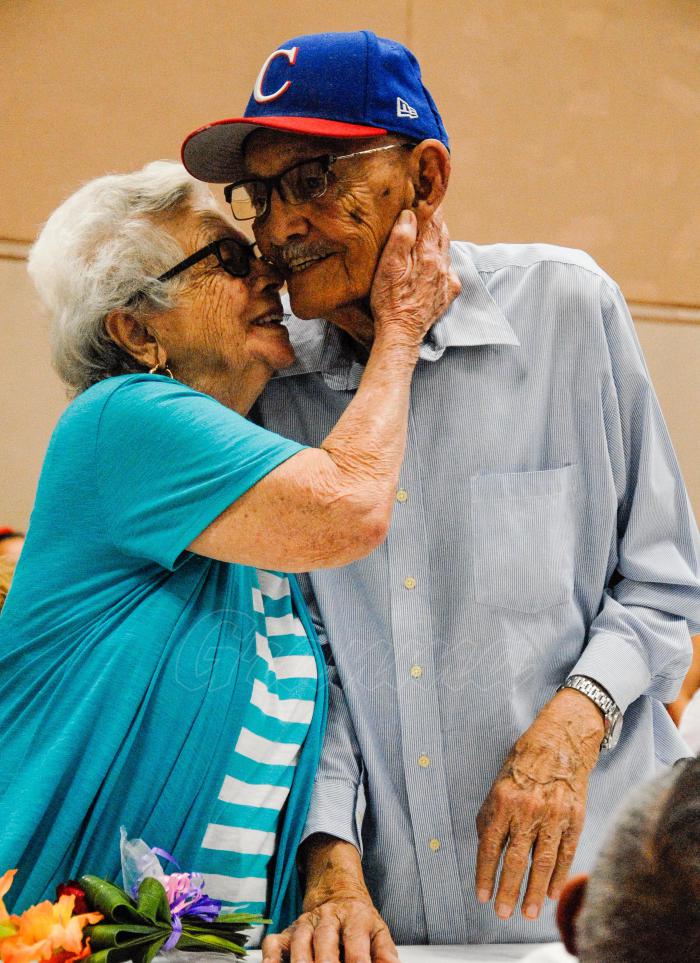

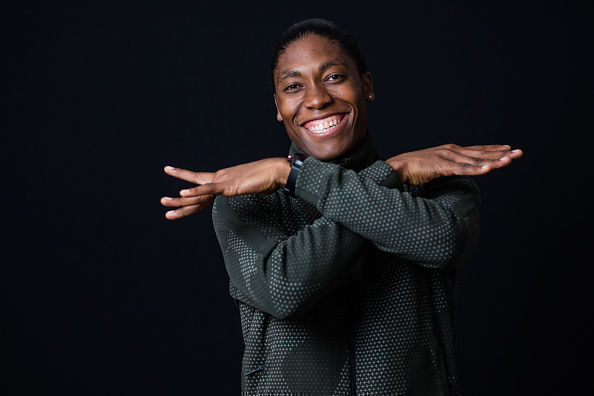



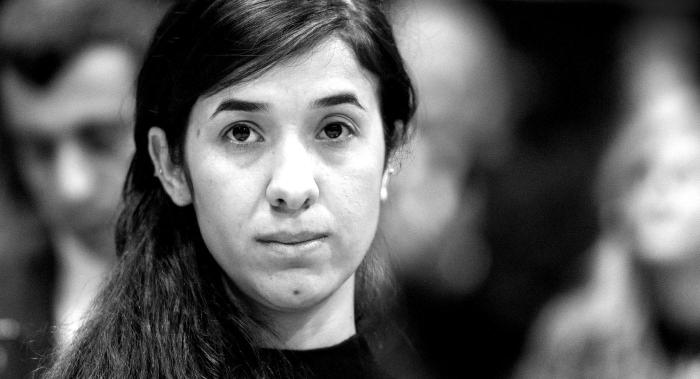


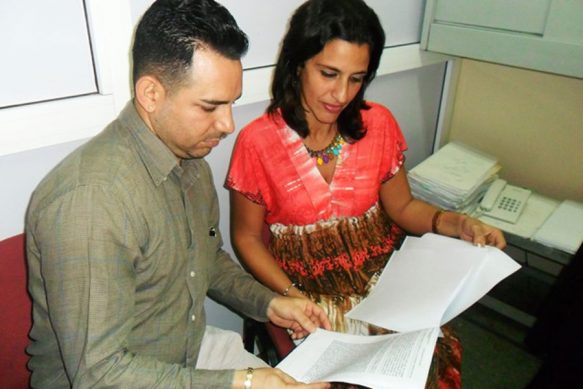
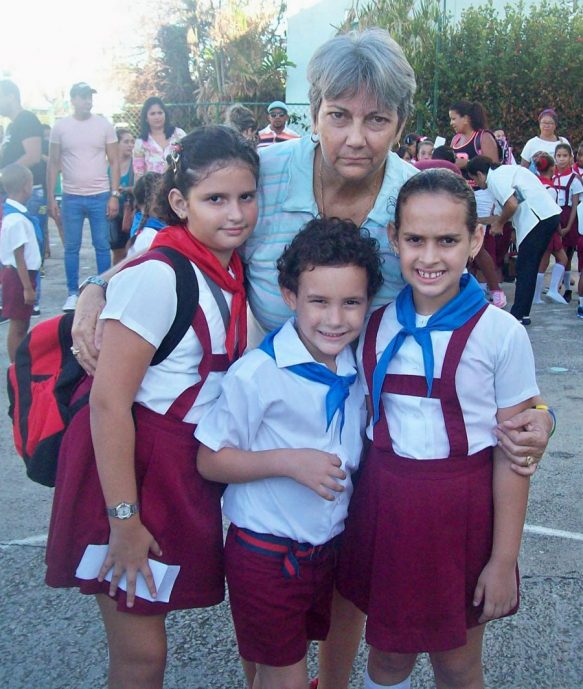
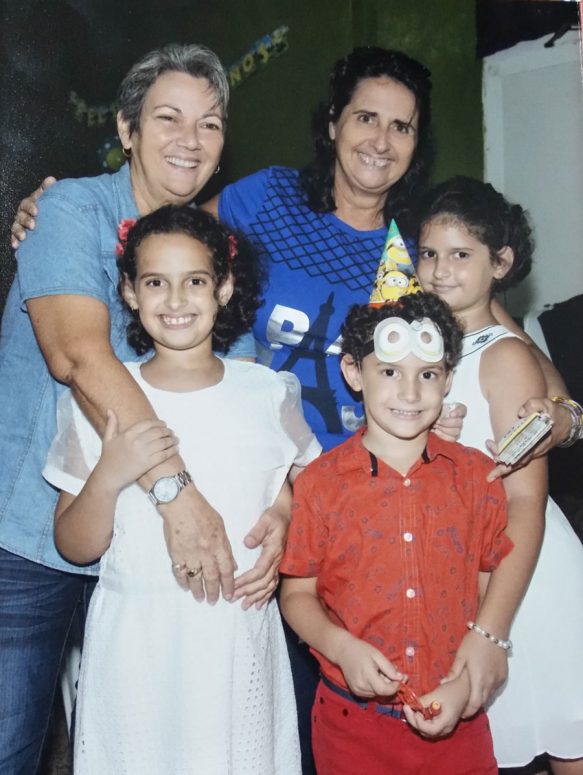
You must be logged in to post a comment.